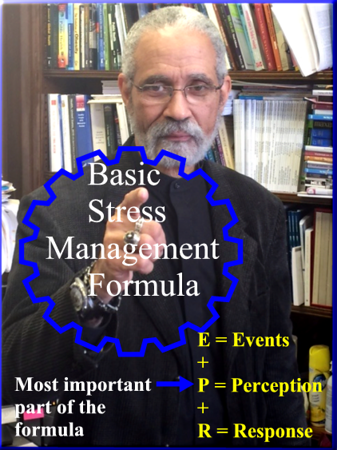How to Accelerate Your Weight Loss with Explosive Workouts
Introduction
The days of slow, never-ending cardio sessions are long gone. Studies have shown that short, fast workouts are far more effective at torching your stubborn fat stores than hours of mindless trudging on the tiresome treadmill.
In this article, we’ll look at how you can burn maximum fat within a given time period by incorporating explosive training methods in your workouts. Do note that this method of training is not something that you begin a weight loss journey with.
If you’ve been leading a sedentary lifestyle for years and reaching for the TV remote is the most exercise that you get daily, explosive workouts are NOT something you should be doing. You’d be better off with resistance training and cardio sessions that are not overly taxing on your body.
You need to get into the swing of things first before you attempt explosive training. After a month of daily exercise, your stamina levels will be better and you’ll be more limber. Then and only then should you start engaging in workouts that are explosive. If you’re not ready, you could throw out your back, sprain a muscle or end up severely sore the next day because of delayed onset muscle soreness (DOMS).
If you’re affected by severe obesity, it would be better to drop several pounds till you’re in the 25% to 30% bodyfat percentage range. If you’re too heavy, explosive workouts will be very stressful on your joints and you’ll be gasping for breath. It would be advisable to talk to your doctor first before beginning any form of training.
Now let’s see why explosive workouts are so powerful.
· The Theory Behind It
The first thing you need to understand is a simple physics equation:
Work done = Force times Distance Moved
While you do not need to know how to calculate and apply this equation, you need to understand the 3 variables involved.
Let’s look at 2 examples.
· Example #1
Let’s assume you walk 200 meters. That is the distance you have moved. The walking is your force. You carrying your weight across the 200 meters is the ‘work done.’ It required some effort and you’d have expended some calories in the process.
Now let’s assume that you sprint across the 200 meters and there are hurdles throughout. You’ll need much more effort to run this distance and jumping over the hurdles requires a force that is much greater than just walking. So, your work done is greater because more force has been used. The metabolic cost of the workout has increased.
There is a principle here known as EPOC, but we’ll look at that further down. Let’s move on to the second example.
· Example #2
Let’s assume you do a squat. You’ll be lowering your butt all the way to the ground or halfway (if you’re doing a half-squat) and straightening your knees. The distance moved and your effort is the amount of work done.
Now, if you added a jump at the end of the squat, it would require extra effort and you’d have covered more distance since you’d have jumped. The amount of work you’ve done has just increased.
The same can apply to push-ups done with a clap or a pull-up that becomes a muscle-up. This will require much more effort and the distance moved will be greater. That means more work done and ultimately, more calories burned.
Your goal is to always maximize the amount of work done. That’s what metabolic cost means. It is the amount of energy consumed when you execute the exercises and it’s usually measured in calories.
So, let’s talk about EPOC now.
· EPOC
EPOC stands for excess post-exercise oxygen consumption. This is one of the pillars of weight loss… and is one of the reasons why explosive training so effective. When your workouts are slow or moderate in intensity, you’ll burn calories during the workout.
For example, if you go for a 45-minute walk, your body will burn calories during these 45 minutes. Once your workout is over, your calorie burning will quickly taper off. So, in total you may have burned about 200 to 300 calories. It could be a little more, but this will generally be it.
However, let’s assume that you did a 20-minute intense workout where you did sprints, box jumps, mountain climbers and other explosive exercises. You will not have burned as many calories as the 45-minute workout.
Don’t panic. This is where EPOC kicks in. Since your explosive workout was so intense, your body would be in a state known as ‘oxygen deficit.’ Your metabolism will get an immense boost and your body will be in fat burning mode for 10 to 14 hours after the workout.
That essentially means that your body has become a fat burning furnace for hours long after your workout is over. You’ll end up burning 3 to 4 times more calories than someone who only does slow or moderate cardio.
This is why you’ll notice that sprinters at the Olympics are muscular and ripped whereas marathon runners often look thin, gangly and may even have a small paunch.
Most of the animals in the animal kingdom move explosively. You’ll never see a lion chasing a zebra for hours. It’s always a fast and explosive chase and if the prey eludes the lion for too long, it stops chasing it. Even the lion knows how to save its strength. Only man subjects himself to hours of endless cardio.
Explosive training is definitely the best way to burn your fat.
· How to Train Explosively
Do note that there is a difference between explosive and high-intensity. Doing push-ups fast just means that you’re training at a high intensity. Doing push-ups where you clap or executing Aztec push-ups is explosive training.
Any exercise that requires you to jump, push off or jerk a weight up or down is explosive in nature. It requires a sudden burst of energy to execute. Many martial arts consist of explosive moves. Kicking, punching, leaping and throwing are all explosive moves.
Here are some of the best explosive exercises you may wish to include in your workouts:
· Box jumps
· Tuck jumps
· Burpees with tuck jump
· Medicine ball slams
· Power plank up
· Explosive rows
· Plyo push-ups
· Dumbbell swings / Kettlebell swings
· Squat thrusters
· Ski jumps
The goal here is to not only add these exercises to your workouts but to also do them fast. To accelerate weight loss, you need to enter an EPOC state… and to do that, you need to be fast. Doing 2 plyo push-ups in 1 hour will not help you. Doing 10 in 30 seconds will leave you panting… and that will definitely get you in fat burning mode.
Not only will explosive training speed up your weight loss, but you’ll see gains in strength and power. Your weight loss will be mostly fat with very minimal lean muscle loss. This is the ideal type of fat loss you want to be aiming for.
You can always search online for more of such exercises or look for tutorials if you do not know how to execute the moves mentioned above. Now that you know about explosive training, slowly add the exercises above to your training regimen as often as you can and you’ll see the fat melt off in no time at all.
Conclusion
Explosive training is not easy, but it’s worth it. Like they say in the gym, “If you look good at the end of your workout, you didn’t train hard enough.” So, if your muscles burn and you feel like dying… go ahead and do 10 more reps. You can do it!
However, before beginning any of these exercises, check with your medical provider for clearance and advice!














